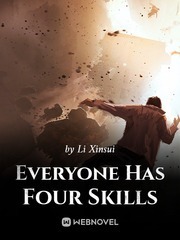Chapter 733 Situation
The development of the battle situation was as Shulka expected, and Manstein led the 11th Army to bypass Surovikino without hesitation.
This is not only because the battle in Stalingrad is urgent, but also because Manstein believes that if a German armored division can block the attack of the flanking Soviet army, then there is no need to worry too much.
If there is any action by Manstein, it is that it assigned two additional infantry divisions to cooperate with the German 29th Panzergrenadier Division to defend Surovikino... If it is dangerous for a division to block the enemy's army, then add two more With a division and a Romanian army, this shouldn't be a problem.
The Soviet Supreme Command has nothing to do with this situation.
After all, Shevchenko suffered heavy casualties when he supervised the battle and failed to break through the line of defense. After that, the German army immediately increased its troops to strengthen the line of defense, so it is normal for the 51st Army to be blocked.
But this normal result is that Manstein's troops drove straight into the army and pointed directly at Karachi.
This time the Don River Front Army will feel uncomfortable.
Rokossovsky's headquarters staff was busy, and telegrams from various units flew to the desktop of the headquarters like snowflakes.
"Comrade Rokossovsky, the 57th Army is running out of supplies!"
The 57th Army was the main force penetrating into Karachi to encircle Stalingrad. According to the order of the Supreme Command, they used the fastest speed to abandon the logistics troops and go straight to Karachi under the condition of muddy roads.
This approach was correct in some respects, as it did cut off German supplies at Stalingrad.
But the effect of cutting off supplies is not satisfactory.
Because Stalingrad's German 6th Army maintained a super-strong combat effectiveness, they stationed along the Volga River and the Don River respectively, and defended the two ends of the opening of the two rivers. The defense depth is more than 100 kilometers wide.
Although the depth of defense is also very problematic, for example, Stalingrad is still partly in the hands of the Soviet army, and for example, the defense lines at both ends of Germany are not stable.
But even so, the German army with a deep defense opened up two airports in the controlled area.
So, the German transport plane transported batches of supplies to the German-controlled area.
Obviously, in the case of this kind of air transportation, the German army surrounded by Stalingrad is not so easy to defeat.
On the other hand, the 57th Army of the Soviet Army was short of supplies due to its long-distance raids deep into the enemy's occupation of Karachi. At the same time, batches of German reinforcements rushed to Karachi... This put the Soviet Army in a very embarrassing situation. At this time, it is not known who surrounded it who. While the Soviet army surrounded the German 6th Army, it was also surrounded by the German 6th Army and the 11th Army.
And the 57th Army of the Soviet Union should be said to be very dangerous, because they don't even have a retreat, and they don't have the space to open up airports and continue their lives by air transport like the 6th Army of Germany.
So, this is actually a comparison of who can survive longer.
In this battle, the Soviet army was obviously inferior to the German army.
"We should knock down the enemy's airfield!" The staff officer said to Rokossovsky.
"I know this, Comrade Margelov!" Rokossovsky replied.
If you want to win in this battle, you must either increase the strength and vitality of your penetration troops, or shorten the enemy's resistance time, or do both.
"The problem is we don't have air superiority!" Rokossovsky said.
Although the Soviet Air Force has undergone large-scale reforms, the reformed Soviet Air Force has only enhanced its limited combat effectiveness, response speed, and command efficiency. It cannot reverse the pros and cons of the Soviet and German Air Forces in one step.
Therefore, the German army used air power that was significantly superior to the Soviet army, that is, a large number of fighter planes were distributed behind Stalingrad.
Because of the advantages of the German fighter planes and they are still waiting for work... To be exact, the German army basically determined the target of the Soviet attack, which is the two transport airports located in the Stalingrad-controlled area.
As I said before, if you know the enemy's attack target, everything will be easy. The German army can set traps in the air and wait for the Soviet fighters to come.
So, the German army forcibly created a safe airspace in Stalingrad, and German transport planes could safely take off and land in this safe airspace to transport supplies.
The German army didn't even use anti-aircraft guns in the Stalingrad area... This is a strategy for the German army to save supplies: the anti-aircraft guns need to consume a lot of shells, and these shells need to be transported by transport aircraft, which consumes capacity.
At the same time, the German army believes that the problem can be solved by using the air force, so there is no need for ground anti-aircraft artillery support at all, so that the supply of Stalingrad can be guaranteed to the maximum extent.
"Not from the air, we can only attack from the ground!" The staff officer added.
Rokossovsky shook his head.
The map is clearly marked. The German army set up two transport airports in the central area of the German-controlled area, and the closest distance to the contact line between the enemy and ourselves is more than 40 kilometers.
That is to say, if you want to control or suppress the German airport from the ground, you have to push forward at least another 30 kilometers, so that the range of the artillery can reach the airport.
However, the defense of the German army in Stalingrad was solid. Batch after batch of Soviet troops rushed up, but batch after batch fell under the enemy's guns.
Before this, the battles of the Soviet army in Stalingrad were mainly defensive, and urban street fighting was obviously more advantageous in defensive warfare.
Now that the Soviet army launches a counterattack and the German army is on the defensive side, the battle situation becomes even more difficult.
"Comrade Rokossovsky!" At this time, the correspondent reported: "Comrade Tolbukhin reported that they found the enemy's reconnaissance troops. It is speculated that the enemy's 11th Army has arrived at our Karachi defense line!"
"So fast!" Rokossovsky couldn't help but raised his head and looked in the direction of the correspondent. After a pause for a few seconds, Rokossovsky ordered: "Let them confirm!"
"yes!"
In fact, there is no need to confirm. Rokossovsky knows that it is the German 11th Army.
This is not only because the German army has always been known for its speed, but also because the German army is eager to rescue Stalingrad. The so-called rescue is like fighting a fire. The 11th Army will definitely rush to Karachi day and night without stopping.
At this time, the 57th Army had just had time to build a line of defense on the front line of Karachi.
Looking at the small black flag representing the enemy on the map being inserted in the direction of Karachi, cold sweat oozes from Rokossovsky's forehead.
"If..." Rokossovsky sighed: "It would be great if Shulka is here, he will definitely find a way!"
(end of this chapter)
RECENTLY UPDATES







